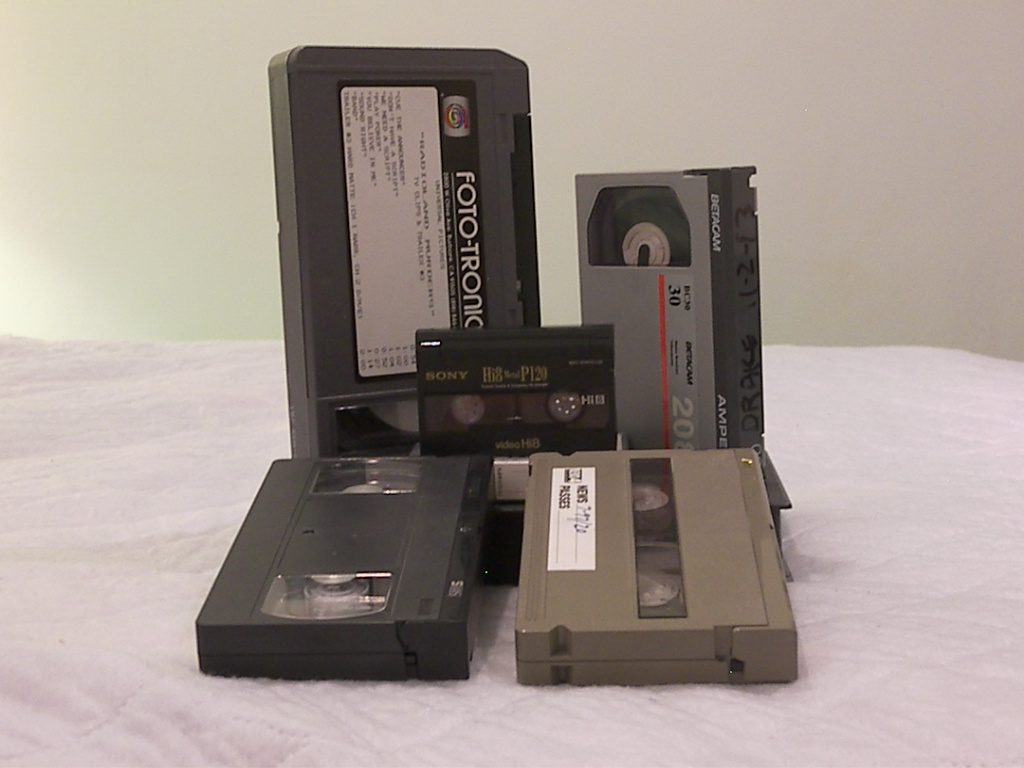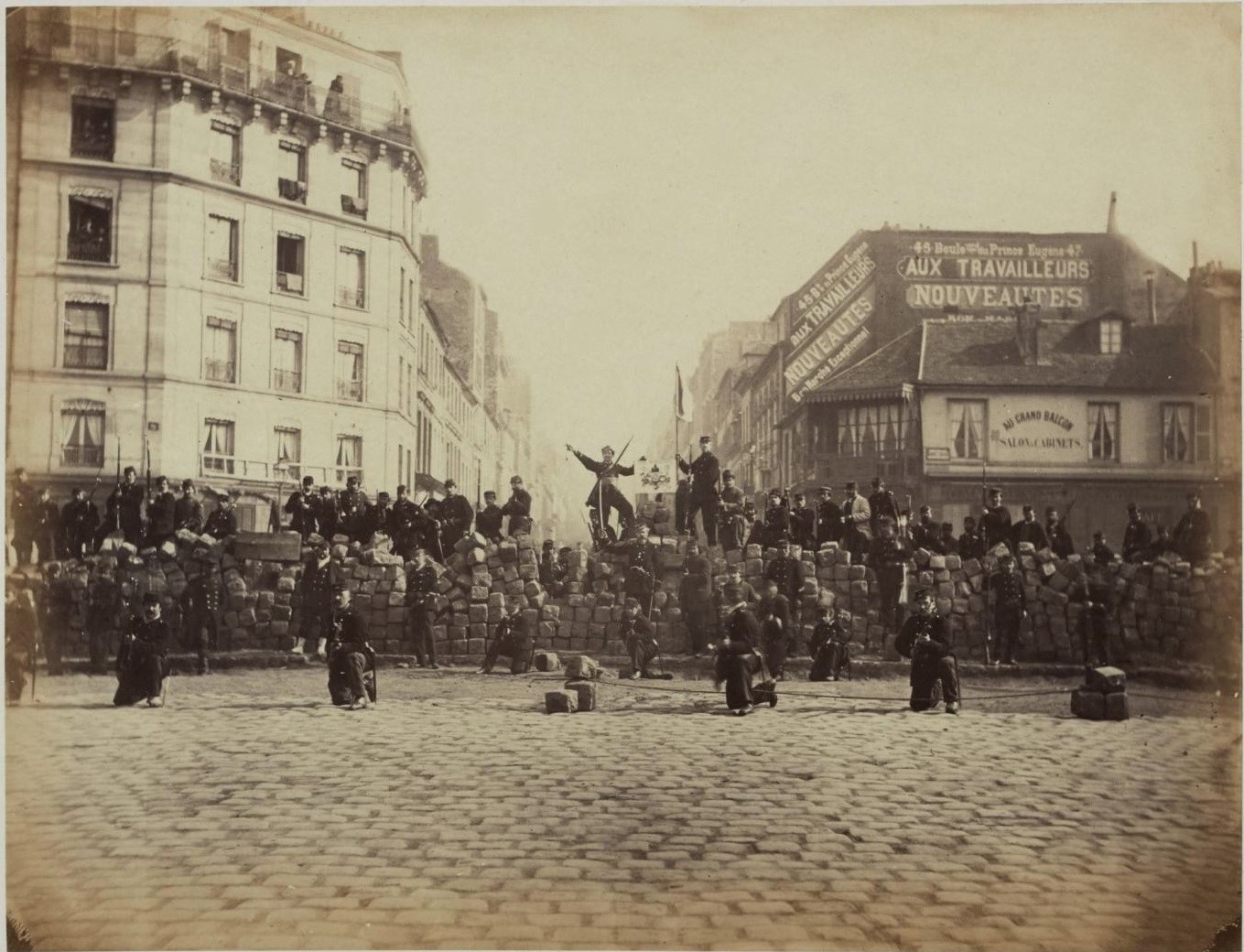|
Portapack
A Portapak is a battery-powered, self-contained video tape analog recording system. Introduced to the market in 1967, it could be carried and operated by one person. Earlier television cameras were large and heavy, required a specialized vehicle for transportation, and were mounted on a pedestal. The Portapak made it possible to shoot and record video easily outside of the studio without requiring a crew. Although it recorded at a lower quality than television studio cameras, the Portapak was adopted by both professionals and amateurs as a new method of video recording. Before Portapak cameras, remote television news footage was routinely photographed on 16mm film and telecined for broadcast. The first portapak system, the Sony DV-2400 Video Rover, was a two-piece set consisting of a black-and-white composite video video camera and a separate record-only helical scan ½″ video tape recorder (VTR) unit. It required a Sony CV series VTR (such as the CV-2000) to play back the vi ... [...More Info...] [...Related Items...] OR: [Wikipedia] [Google] [Baidu] |
CCJ Connector
The CCJ connector (short for Camera Cable type J), also known as a J-type connector or an EIAJ connector, is the specification for a 10-pin DIN-style connector established by member companies of the Electronic Industries Association of Japan (EIAJ) in the late 1960s to interconnect various pieces of video camera equipment. Within Japanese-built video camera equipment built from the late 1960s to the mid-1980s, the CCJ connector was especially widely used to connect video cameras to video tape recorders (VTRs), especially battery-powered portable VTRs—so-called '' portapacks''—which were common before the dawn of camcorders, which married both the camera and the VTR. History The CCJ connector was developed in the late 1960s alongside the EIAJ-1 specification for open reel video tape. Both standards enabled non-broadcast-professional enthusiasts and industrial prosumers alike to use any competitor's consumer video camera equipment without having to worrying about interoperabil ... [...More Info...] [...Related Items...] OR: [Wikipedia] [Google] [Baidu] |
Magnetic Tape
Magnetic tape is a medium for magnetic storage made of a thin, magnetizable coating on a long, narrow strip of plastic film. It was developed in Germany in 1928, based on the earlier magnetic wire recording from Denmark. Devices that use magnetic tape can with relative ease record and play back audio, visual, and binary computer data. Magnetic tape revolutionized sound recording and reproduction and broadcasting. It allowed radio, which had always been broadcast live, to be recorded for later or repeated airing. Since the early 1950s, magnetic tape has been used with computers to store large quantities of data and is still used for backup purposes. Magnetic tape begins to degrade after 10–20 years and therefore is not an ideal medium for long-term archival storage. The exception is data tape formats like Linear Tape-Open, LTO which are specifically designed for long-term archiving. Information in magnetic tapes is often recorded in tracks which are narrow and long areas of in ... [...More Info...] [...Related Items...] OR: [Wikipedia] [Google] [Baidu] |
U-Matic
U-matic, also known as -inch Type E Helical Scan or SMPTE E, is an analog recording videocassette format developed by Sony. First shown as a prototype in October 1969 and introduced commercially in September 1971, it was among the earliest video formats to house videotape inside a cassette, replacing the reel-to-reel systems common at the time. The format uses tape, earning it the nickname "three-quarter-inch" or simply "three-quarter," in contrast to larger open-reel formats like Type C videotape and quadruplex videotape. The name ''U-matic'' refers to the U-shaped tape path as it threads around the video drum. Unlike most cassette formats, U-matic's supply and take-up reels rotate in opposite directions during playback, fast-forward, and rewind—one clockwise, the other counterclockwise. Each cassette has an internal locking mechanism that secures the tape hubs during transport, and a spring-loaded door that protects the tape; this door automatically opens when the casse ... [...More Info...] [...Related Items...] OR: [Wikipedia] [Google] [Baidu] |
Sony Products
is a Japanese multinational conglomerate headquartered at Sony City in Minato, Tokyo, Japan. The Sony Group encompasses various businesses, including Sony Corporation (electronics), Sony Semiconductor Solutions (imaging and sensing), Sony Entertainment (including Sony Pictures and Sony Music Group), Sony Interactive Entertainment (video games), Sony Financial Group, and others. Sony was founded in 1946 as by Masaru Ibuka and Akio Morita. In 1958, the company adopted the name Initially an electronics firm, it gained early recognition for products such as the TR-55 transistor radio and the CV-2000 home video tape recorder, contributing significantly to Japan's post-war economic recovery. After Ibuka's retirement in the 1970s, Morita served as chairman until 1994, overseeing Sony's rise as a global brand recognized for innovation in consumer electronics. Landmark products included the Trinitron color television, the Walkman portable audio player, and the co-dev ... [...More Info...] [...Related Items...] OR: [Wikipedia] [Google] [Baidu] |
Television Technology
The technology of television has evolved since its early days using a mechanical system invented by Paul Gottlieb Nipkow in 1884. Every television system works on the scanning principle first implemented in the rotating disk scanner of Nipkow. This turns a two-dimensional image into a time series of signals that represent the brightness and color of each resolvable element of the picture. By repeating a two-dimensional image quickly enough, the impression of motion can be transmitted as well. For the receiving apparatus to reconstruct the image, synchronization information is included in the signal to allow proper placement of each line within the image and to identify when a complete image has been transmitted and a new image is to follow. While mechanically scanned systems were experimentally used, television as a mass medium was made practical by the development of electronic camera tubes and displays. By the turn of the 21st century, it was technically feasible to replace ... [...More Info...] [...Related Items...] OR: [Wikipedia] [Google] [Baidu] |
Harcourt Brace Jovanovich
Harcourt () was an American publishing firm with a long history of publishing fiction and nonfiction for adults and children. It was known at different stages in its history as Harcourt Brace, & Co. and Harcourt Brace Jovanovich. From 1919 to 1982, it was based in New York City. The company was last based in San Diego, California, with editorial/sales/marketing/rights offices in New York City and Orlando, Florida, Houghton Mifflin acquired Harcourt in 2007. It incorporated the Harcourt name to form Houghton Mifflin Harcourt. As of 2012, all Harcourt books that have been re-released are under the Houghton Mifflin Harcourt name. The Harcourt Children's Books division left the name intact on all of its books under that name as part of HMH. In 2007 the U.S. Schools Education and Trade Publishing parts of Harcourt Education were sold by Reed Elsevier to Houghton Mifflin Riverdeep Group. Harcourt Assessment and Harcourt Education International were acquired by Pearson, the intern ... [...More Info...] [...Related Items...] OR: [Wikipedia] [Google] [Baidu] |
Raindance Foundation
Raindance Foundation (RainDance Corporation) was founded in October 1969 by Frank Gillette, Paul Ryan, Michael Shamberg, Louis Jaffe, and Marco Vassi. Raindance was a self-described "alternate culture think-tank" that embraced video as an alternative form of cultural communication. The name "RainDance Corporation" was an ironic reference to the mainstream organization Rand Corporation. Influenced by the communications theories of Marshall McLuhan and Buckminster Fuller, the collective produced a data bank of tapes and writings that explored the relation of cybernetics, media, and ecology. From 1970 to 1974, Raindance published the seminal video journal '' Radical Software'' (initially edited by Beryl Korot and Phyllis Gershuny), which provided a network of communications for the emerging alternative video movement with a circulation of 5,000. In 1971, Dean and Dudley Evenson joined the Raindance Foundation and taught video workshops through the Metropolitan Museum of Art under a ... [...More Info...] [...Related Items...] OR: [Wikipedia] [Google] [Baidu] |
Big Three Television Networks
From the 1950s to the 1980s, during the network era of American television, there were three commercial broadcast television networks – NBC (the National Broadcasting Company, "the Peacock Network"), CBS (the Columbia Broadcasting System, "the Eye Network"), ABC (the American Broadcasting Company, "the Alphabet Network") – that due to their longevity and ratings success are informally referred to as the "Big Three". The three networks' dominance was interrupted with the launch of Fox (the Fox Broadcasting Company, "the Searchlight Network") in 1986, leading it to join them as one of the expanded "Big Four", while the viewership shares of all the major broadcast networks declined over the following years. Backgrounds The National Broadcasting Company and Columbia Broadcasting System were both founded as radio networks in the 1920s, with NBC eventually encompassing two national radio networks, the prestige Red Network and the lower-profile Blue Network. They gradu ... [...More Info...] [...Related Items...] OR: [Wikipedia] [Google] [Baidu] |
Videofreex
The Videofreex were a pioneering video collective who used the Sony Portapak for countercultural video projects from 1969 to 1978. They were founded in 1969 by David Cort, Mary Curtis Ratcliff and Parry Teasdale, after Cort and Teasdale met each other at the Woodstock Music Festival. Other early members include Skip Blumberg, Chuck Kennedy, Davidson Gigliotti, Bart Friedman, Carol Vontobel, Nancy Cain, and Ann Woodward, with dozens of additional collaborators participating in the group's cooperative projects. The group formed initially when CBS executive Don West hired young videographers to create a documentary program about the counterculture. With network funding, the group traveled the country recording interviews with activists and revolutionaries, including Abbie Hoffman and Fred Hampton. The finished program was never broadcast, but the equipment acquired for the production would form the basis for future projects. Initially based out of New York City, in 1971 the Video ... [...More Info...] [...Related Items...] OR: [Wikipedia] [Google] [Baidu] |
TVTV (video Collective)
TVTV (short for Top Value Television) was a San Francisco-based video collective that produced documentary video works using guerrilla art techniques. History The group was founded in 1972 by Allen Rucker, Michael Shamberg, Tom Weinberg, Hudson Marquez, and Megan Williams. Shamberg was the author of the 1971 "do-it-yourself" video production manual '' Guerrilla Television'' TVTV pioneered the use of independent video based on the new and then-revolutionary media, ½" Sony Portapak video equipment, later embracing the ¾" video format. In 1975 the group left San Francisco for Los Angeles, where it took up a contract with PBS to shoot ''Supervisions'', a series of short tapes on television history. The group disbanded in 1979. Their last production was ''TVTV: Diary of the Video Guerillas''. Members Over the years, more than thirty "guerrilla video" makers were participants in TVTV productions. They included members of the Ant Farm (Chip Lord, Doug Michels, Hudson Marquez, ... [...More Info...] [...Related Items...] OR: [Wikipedia] [Google] [Baidu] |
Activism
Activism consists of efforts to promote, impede, direct or intervene in social, political, economic or environmental reform with the desire to make Social change, changes in society toward a perceived common good. Forms of activism range from Mandate (politics), mandate building in a community (including writing letters to newspapers), petitioning elected officials, running or contributing to a political campaign, preferential patronage (or boycott) of businesses, and demonstrative forms of activism like rallies, street marches, Strike action, strikes, sit-ins, or hunger strikes. Activism may be performed on a day-to-day basis in a wide variety of ways, including through the creation of art (artivism), computer hacking (hacktivism), or simply in how one chooses to spend their money (economic activism). For example, the refusal to buy clothes or other merchandise from a company as a protest against the Exploitation of labour, exploitation of workers by that company could be cons ... [...More Info...] [...Related Items...] OR: [Wikipedia] [Google] [Baidu] |





